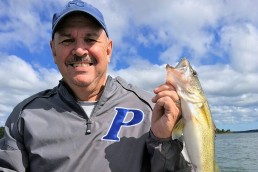Missouri Outdoor News August 2019
SHARE THIS POST
MDC proposes prices for non-resident permits
The MDC is proposing modest price increases for some nonresident hunting and fishing permits. According to MDC, permit prices have not increased in over a decade, and adjustments are needed to help keep up with increasing costs of providing conservation work and services around the state.
MDC is also proposing offering discounted deer and turkey permits for non-resident landowners with 75 acres or more, to show appreciation for wildlife habitat work completed on their Missouri properties. The discount for nonresident landowners is similar to a past regulation that was in effect until 2009. MDC eliminated the offering during its last round of permit changes in 2008.
“We commonly hear from many Missourians that our non-resident permit prices are too low compared to other states,” said MDC Director Sara Parker Pauley. “Increasing prices for nonresident hunting and fishing permits will address this. It will also add needed revenue to help with our ever-rising costs of managing the fish, forests and wildlife of Missouri.”
While some MDC permit prices have remained the same since 1999, and others for about a decade, MDC’s costs for goods and services have increased. According to the Federal Bureau of Labor Statistics’ Consumer Price Index, consumers are paying 37 percent more today for goods and services, compared to 2003.
MDC is proposing price increases for the non-resident permits. They account for nearly 100 percent of daily fishing permit purchases and daily small-game hunting permit purchases. As part of the changes, MDC will also limit daily fishing permits and daily hunting permits to 1 and 3 days and eliminate daily fishing permits and daily hunting permits for other numbers of days (2, 4, 5, 6, and 7 days).
In addition, MDC is proposing increasing prices for nonresident permits and proposing permit discounts for nonresident landowners with a minimum of 75 acres:
The proposed changes received initial approval by the Missouri Conservation Commission at its May 23 meeting. As part of the rulemaking process, MDC is asking for public comment on the changes during July and early August at short.mdc.mo.gov/Z49. The Commission will consider input received and make a final decision to move forward, modify, or withdraw the changes during its Aug. 23 meeting. If approved, the anticipated effective date of the changes would be Feb. 29, 2020.
MDC permit sales account for about 17 percent of the agency’s annual revenue, and help fund numerous conservation efforts around the state. Other significant revenue sources include the Conservation Sales Tax at about 61 percent and federal reimbursements at about 16 percent. Sales and rentals, interest and other sources make up the remaining 6 percent of MDC revenue.
According to MDC, the average Missourian pays about $19 annually for conservation efforts through the Department’s dedicated sales tax revenue. MDC receives no funding from property taxes, tickets or citations (which go to local school districts), or the state’s general revenue budget.
MDC proposes new fees on trout permits/daily tags
The MDC is also proposing modest price increases for annual trout permits and daily trout tags, starting in 2020. According to MDC, the increases are needed to better cover its costs of running five trout hatcheries that raise and release more than 1.7 million trout each year for public fishing.
If the price increases are implemented, starting in 2020 the cost of an annual trout permit will go from $7 to $10 for anglers 16 years of age and older, and from $3.50 to $5 for anglers ages 15 and younger. The cost of a daily trout tag to fish at Missouri’s four trout parks—Maramec Spring Park, Bennett Spring State Park, Montauk State Park, and Roaring River State Park — will go from $3 to $4 for adults and from $2 to $3 for those 15 years of age and younger.
A trout permit is required to possess trout, except in trout parks where a daily trout fishing tag is required during the catch-and-keep season. In addition, a trout permit is required for winter fishing in trout parks during the catch-and-release season, and for fishing year-round in Lake Taneycomo upstream from the U.S. Highway 65 bridge. To fish for trout, you must also have a fishing permit or qualify for an exemption
“The Conservation Department has not increased these permit prices in nearly two decades,” said MDC Director Sara Parker Pauley. “We are adjusting these permit prices—which were set in 1999—to make them more in line with today’s real costs of the work we do. The price increases will help MDC meet the pressures of increased management costs at our hatcheries, and help meet the increased demand for trout fishing around the state.”
MDC raises trout at five fish hatcheries and releases about 1.7 million trout around the state for public fishing each year. MDC stocks the trout at the four very popular daily trout parks, in more than 150 miles of cold-water trout streams, at Lake Taneycomo, and at numerous lakes around the state as part of its winter trout-fishing program. The winter trout-fishing program started in 1989 in St. Louis and has been expanded to 35 lakes in communities across the state.
Are you enjoying this post?
You can be among the first to get the latest info on where to go, what to use and how to use it!
According to MDC, the annual cost of fish food and staff labor to raise a trout in 2003 was about $1 per fish. The annual cost in 2017 had jumped to nearly twice that amount.
Those five fish hatcheries — Bennett Spring, Montauk, Shepherd of the Hills, Roaring River, and Maramec Spring Park – also require regular maintenance, and several have been damaged numerous times in recent years by spring flooding. MDC has spent more than $11 million over the past decade on repairs and improvements to the hatcheries. MDC also reports that utility costs for the five hatcheries have increased by more than 25 percent since 2008.
According to MDC, the average Missourian pays about $19 annually for conservation efforts through the Department’s dedicated sales tax revenue. MDC receives no funds from property taxes, tickets or citations (which go to local school districts), or the state’s general revenue budget. For more information on MDC revenue, expenses, and key conservation efforts, read the MDC Annual Review in the January 2019 issue of the Missouri Conservationist, or online at mdc.mo.gov/conmag.
The proposed price increases for annual trout permits and daily trout tags were given initial approval by the Missouri Conservation Commission at its May 23 meeting.
As part of the rulemaking process, MDC is asking for public comments on the changes during July and early August at short.mdc.mo.gov/Z49. To comment on proposed price increases for trout permits, refer to “3 CSR 10-5.430 Trout Permit.” For daily trout tags, refer to “3 CSR 10-5.250 Daily Hunting or Fishing Tags.”
The Commission will consider input received and make a final decision to move forward, modify, or withdraw the changes during its Aug. 23 meeting. If approved, the anticipated effective date of the changes would be Feb. 29, 2020.
Amarugia Lake open for fishing
The MDC’s Amarugia Lake in Amarugia Highlands Conservation Area is open for a full summer of fishing for the first time since the lake was renovated.
MDC began a project to deepen the lake and improve the fishery in 2012. Amarugia’s 45-acres received a restocking in 2016 but remained closed to fishing to allow its fish population to rebuild.
Anglers can catch several species of fish at Amarugia including channel catfish, largemouth bass, bluegill and redear sunfish. Although white crappie and bullhead catfish were not stocked, they entered the lake from the watershed or an unauthorized stocking, and have become overpopulated, negatively impacting populations of stocked fish.
The daily creel limit for crappie at the lake is 30 fish with no length limit. Anglers are encouraged to catch and keep a full limit of crappie. The same is true for bullheads, where the daily limit is 20 fish.
In surveys, biologists found low populations of largemouth bass and a relatively low percentage of bass over the 15-inch minimum length limit. Anglers can catch and keep a limit of two largemouth bass that are 15 inches or longer. “But I would encourage anglers not to keep any largemouth bass at the lake at this time,” Jake Colehour, MDC Fisheries Management Biologist said.
Anglers can keep four channel catfish. The upside for anglers is that the lake has a lot of hungry fish. “I would say with the sheer number of crappie, bluegill, and bullheads, you’re going to catch something,” Colehour said. “If you put a piece of worm out there, you’re going to catch a fish.”
The renovation made water depth near the banks deeper. Amarugia Lake also has some fishing jetties, a boat launch ramp, a privy and several parking lots. The fishing pier on the west side of the lake is handicapped accessible. A few small islands were added during the renovation to diversify fish habitat.
MWO
SHARE THIS POST
Did you enjoy this post?
You can be among the first to get the latest info on where to go, what to use and how to use it!
Darrell Taylor
Darrell Taylor has fished for more than 65 years. During the past 25 years, Taylor has generated more than 2,000 published articles, columns and fishing reports. His writings received 14 peer-level awards from outdoor writer organizations, including the Association of Great Lakes Outdoor Writers “Excellence in Craft” Golden Glow Award, their highest recognition.



